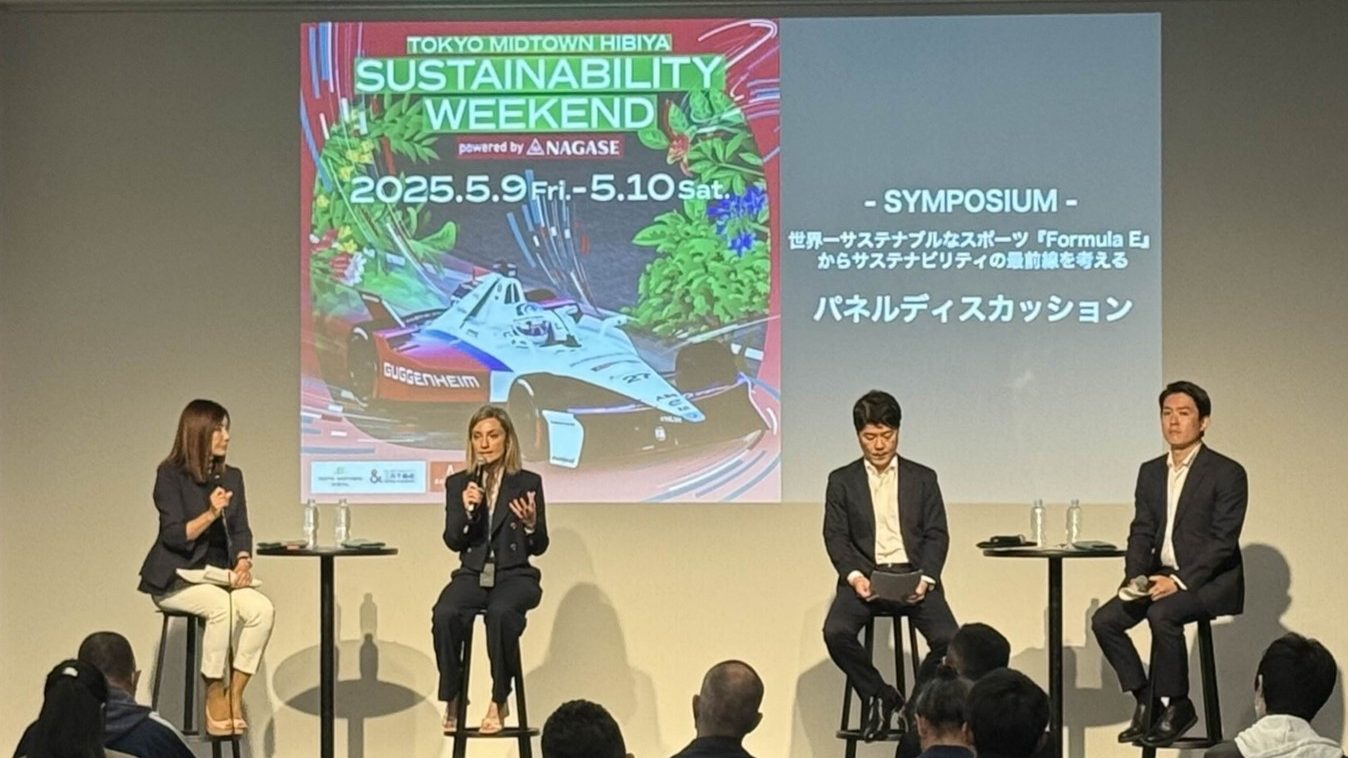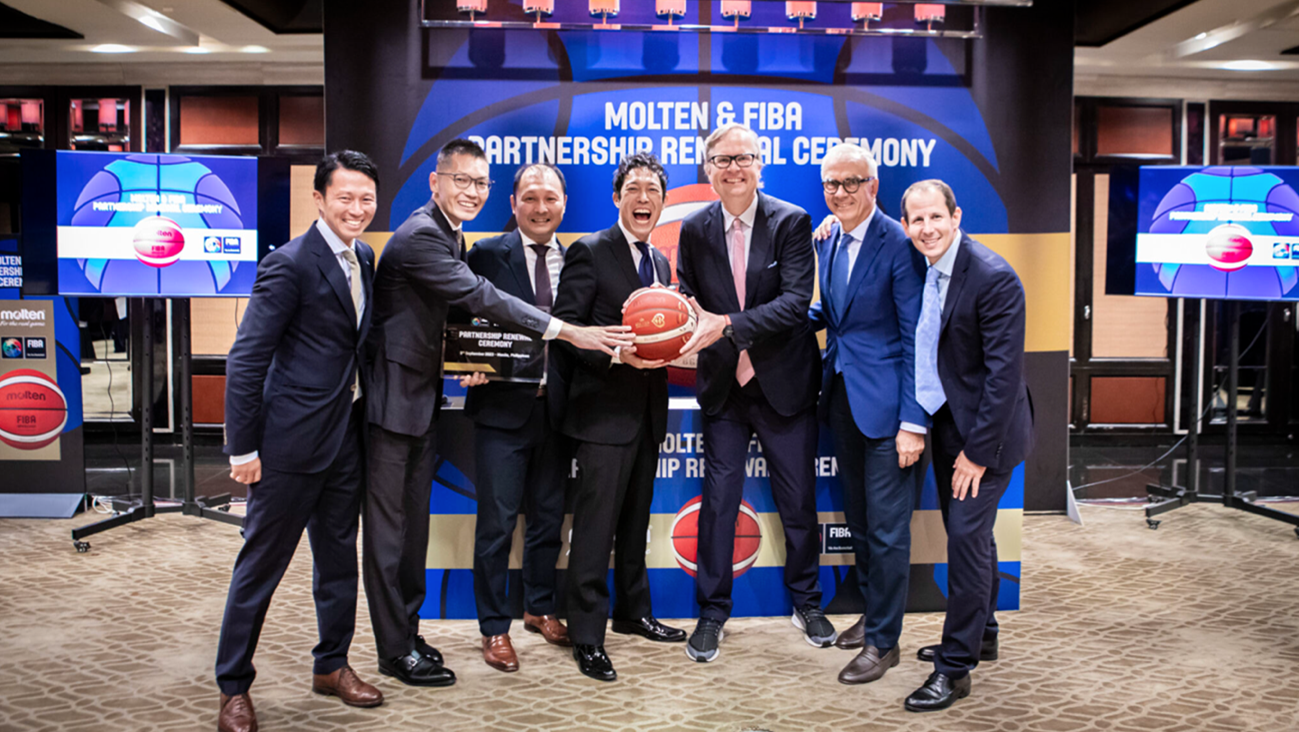
On May 17 and 18, 2025, the ABB FIA Formula E World Championship returned to Tokyo for its second year. Ahead of this global event—often dubbed the world’s most sustainable motorsport—“Tokyo Midtown Hibiya Sustainability Weekend powered by NAGASE” was held on May 9 and 10. Co-hosted by Nagase & Co., Ltd. and Mitsui Fudosan Co., Ltd., the event offered immersive experiences centered around sustainability. These included a full-scale display of the Andretti Formula E race car, hands-on driving simulators, talk sessions, and a symposium. Over the two days, the event attracted more than 40,000 visitors.
What message were these two Japanese companies hoping to convey through this high-profile activation, and what purpose lay behind it? This report explores the intent and significance of their initiative.

Formula E: A New Racing Series Created for the Planet
“Formula E was not created because the world needed another racing series—it was created for the planet.”
This message, delivered by Julia Pallé, Vice President of Sustainability at Formula E, captures the very reason for the championship’s existence. With transportation responsible for roughly a quarter of global CO₂ emissions, decarbonizing the sector has become an urgent global imperative. Launched in 2014, Formula E is the world’s first all-electric championship—built as a next-generation sports platform that merges cutting-edge technology with environmental responsibility.
Formula E’s core vision is “accelerating sustainable human progress through the power of electric racing.” The series is designed to strike a balance between elite competition and environmental stewardship. It features:
- A sport certified as net zero carbon since its inception
- City center races that raise environmental awareness in people’s everyday lives
- Technology transfer that accelerates commercial EV development
- A broad scope of environmental and social initiatives, including ISO and FIA environmental certifications, ESG reporting, gender inclusion, and local partnerships
Formula E goes beyond the boundaries of traditional motorsport. It functions as a living laboratory for the future of mobility and a communication platform where companies and society can come together to share sustainable values.
Although public awareness of Formula E remains limited in Japan, the involvement of domestic manufacturers such as Nissan and Lola Yamaha ABT is a sign of growing interest and investment. And it’s precisely because awareness is still developing that there is high value in “becoming a storyteller.” How sustainability and innovation are communicated and implemented is becoming a critical challenge for Japanese companies seeking to engage with global society.
“Formula E is not just motorsport—sustainability is at its core. The technology and insights developed through Formula E ripple outward, influencing urban transportation, corporate action, and public awareness.”
— Julia Pallé
NAGASE and Mitsui Fudosan: Co-Creation Between Two Industries
In May 2025, as Tokyo welcomed Formula E for the second consecutive year, a new form of collaboration took shape at Tokyo Midtown Hibiya—an urban nexus of culture and history. The “Tokyo Midtown Hibiya Sustainability Weekend powered by NAGASE” was a result of two companies—NAGASE, a chemicals trading company seeking global brand recognition through its sustainability initiatives, and Mitsui Fudosan, a real estate developer committed to balancing social impact and business growth through forest-building and wood utilization—coming together with a shared commitment to sustainability. Under the global spotlight of Formula E, they created a collaborative platform designed for co-creation.
This initiative was more than a collaboration. It served as a platform for activating their goals while broadcasting their stance globally. NAGASE as a sponsor of the Andretti Formula E Team, aims to communicate its values and ambitions globally. Mitsui Fudosan, for its part, leads the initiative with a vision of harmony between urban development and nature.
This movement took root in Hibiya, Tokyo—a place where culture, history, and diverse people converge. It is here that a new narrative for the future has quietly, yet definitively, begun.
Why Formula E, and Why Now?

©Photo by Simon Galloway/LAT Images for Formula E: Getty Images
Formula E has been sport-certified net zero carbon since its inaugural season, and by hosting races in the hearts of major cities, it fosters environmental awareness within people’s everyday routines. Its sustainability efforts are multilayered, encompassing ISO and FIA environmental certifications, ESG reporting, gender inclusion, and community engagement initiatives.
Participating teams also feed the insights gained from racing into the development of commercial electric vehicles. For instance, Stellantis has publicly stated that its EV technology transfer period from racetrack to road is four years, while Nissan has reported a 181% improvementin battery performance for its LEAF model thanks to its involvement in Formula E. Formula E serves as both a testing ground for the future of mobility and a storytelling mediumfor companies and communities to share and amplify sustainable values.
In this internationally recognized context, how will Japanese companies choose to engage?
While awareness of Formula E remains limited in Japan, the presence of domestic manufacturers such as Nissan and Lola Yamaha ABT demonstrates growing interest and investment in the series. Precisely because public familiarity is still developing, there is greater value in becoming a communicator. The question of how to speak about—and implement—sustainability and innovation is becoming ever more critical for Japanese companies seeking meaningful global dialogue.


◇ Splat Inc.
About Splat Inc.
https://splat.co.jp/?lang=en_us
Founded in March 2023, Splat Inc. is a communication design company with deep expertise in global strategic communications. Its mission is to convey the intrinsic social value of sports beyond competition and to connect it with corporate engagement and Japan’s growth.
By visualizing the broader potential of sports and designing communication strategies that bridge sports, businesses, and society, Splat helps clients build differentiated, resilient brands through thoughtful, purpose-driven storytelling.
Note: This article was originally published in Japanese on Sep 4, 2025. The original article can be accessed here.







